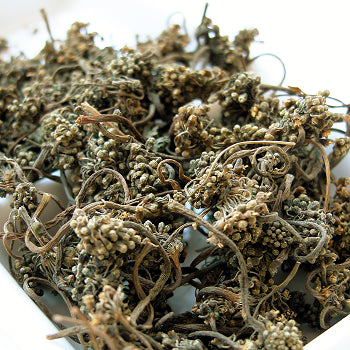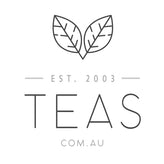Asian Ginseng
Posted by SALINA H

The name “ginseng” is used to refer to both American (Panax quinquefolius) and Asian or Korean ginseng (Panax ginseng), which belong to the species Panax and have a somewhat similar chemical makeup. Siberian ginseng or Eleuthero (Eleutherococcus senticosus), on the other hand, is an entirely different plant with different effects. It is distantly related to ginseng, but it does not contain the same active ingredients. Both Asian and American ginseng contain ginsenosides, substances that are thought to give ginseng its medicinal properties.
Like American ginseng, Asian ginseng is a light tan, gnarled root that often looks like a human body with stringy shoots for arms and legs. Thousands of years ago, herbalists thought that because of the way ginseng looks it could treat many different kinds of ailments, from fatigue and stress to asthma and cancer. In traditional Chinese medicine, ginseng was often combined with other herbs and used often to bring longevity, strength, and wisdom to its users.
Panax Ginseng
Korean Ginseng is known to be the most effective and popular variety everywhere of oriental or panax ginseng.
It helps improve circulation, blood flow, recovery from fatigue and Illness. Asian people take panax regularly for the numbers of health benefits they can get, like stamina, to enhance libido, improve work efficiency, to combat fatigue, to improve and make the immune system strong.
Some even use it for people who have fibromyalgia, chronic fatigue, to improve sleep cycle, to boost energy, depression and even Alzheimer’s disease just by reducing pain levels. This type of ginseng is harvested after 6 years then it is steam-cured and dried.
Because of this process it produces reddish-brown root which preserves the plants active and important compounds that are called ginsenosides.
Another species of Panax or oriental ginseng is the Chinese ginseng.
This type of ginseng that has milder effect or milder energy boosting effect compared to Korean ginseng. Known to best suited for young children, elderly and individuals who are very ill because of its mild effect.
This is mainly produced in Manchuria that produces a white color by drying the roots in the sun. This process causes the enzymes to break down and reduces the root’s potency. It has a cultivation time of four to six years to harvest.
Siberian Ginseng
Eleutherococcus senticosus or Siberian ginseng is in not per se a ginseng. It is a different species that was vested with a ginseng name for the purpose of elevating sales and for a more effective marketing strategy.
Its effect is less potent compared to Asian varieties like red panax. It has a woody roots unlike to Asian varieties that possess a fleshy characteristic and it contains eleutherosides compounds.
Although eleutherosides are different types of adoptogens they still possess energy boosting energy.
Ginseng is sometimes called an “adaptogen,” an herb that helps the body deal with various kinds of stress, although there is no scientific evidence of adaptogens. But ginseng has been studied for several conditions, and it remains of the most popular herbs in the United States. Many of the studies examining Asian or Korean ginseng have used combinations of herbs, so it’s not always possible to say whether ginseng alone had any benefit. Research on Asian ginseng has included the following:
Immune system health
Asian ginseng is believed to enhance the immune system, possibly helping the body fight off infection and disease. Several clinical studies report that Asian ginseng can improve immune function. Studies have found that ginseng seems to increase the number of immune cells in the blood, and improve the immune system’s response to a flu vaccine. In one study, 227 participants received either ginseng or placebo for 12 weeks, with a flu shot administered after 4 weeks. The number of colds and flu were two-thirds lower in the group that took ginseng.
Cardiovascular health
Asian ginseng seems to have antioxidant effects, meaning it helps rid the body of free radicals, substances which can damage DNA and are thought to contribute to heart disease, diabetes, and other conditions. Preliminary studies suggest Asian ginseng may improve the symptoms of heart disease in humans. It also may decrease “bad” LDL cholesterol levels and raise “good” HDL cholesterol.
Its effect on blood pressure is more complicated. Some studies have found it seems to lower blood pressure, while others find it causes blood pressure to rise. That had led some people to theorize that ginseng may increase blood pressure at usual doses but lower it when doses are higher. Until researchers know for sure, you should not take ginseng if you have high blood pressure unless your doctor tells you it’s OK.
Type 2 diabetes
Although American ginseng has been studied more for diabetes, both types of Panax ginsengs may lower blood sugar levels in those with type 2 diabetes. However, in a few studies it appeared that Asian or Korean ginseng worsened blood sugar levels. Some people think that the ginsenosides found in American ginseng might lower blood sugar while the different ginsenosides in Asian ginseng could raise blood sugar levels. Until more is known, you should not take ginseng if you have diabetes without your doctor’s strict supervision and monitoring.
Mental performance
People who take ginseng often say they feel more alert. Several studies report that Asian ginseng may slightly improve thinking or learning. Early research shows that Asian ginseng may improve performance on such things as mental arithmetic, concentration, memory, and other measures. More research in this area, although not easy to do, would be helpful. Some studies have also found a positive effect with the combination use of Asian ginseng and Ginkgo biloba.
The studies have varied in what kinds of mental function they measured, making it hard to know exactly what the effects of ginseng are. For example, one study found an increase in the ability think abstractly among those who took ginseng, but no change in their reaction time or concentration levels.
Physical endurance
There have been a number of studies using Asian ginseng for athletic performance in humans and laboratory animals. Results have been mixed, with some studies showing increased strength and endurance, others showing improved agility or reaction time, and others showing no effect at all. Nevertheless, athletes often take Asian ginseng to boost both endurance and strength. Asian ginseng was also found to reduce fatigue in a study of 332 patients.
Stress and well-being
Asian ginseng is sometimes called an “adaptogen,” something that helps the body deal with stress, whether physical or mental. While that can be difficult to study, there is some evidence that ginseng (both Asian and American types) can improve quality of life — although quality of life can be hard to measure, too. A study of 501 men and women living in Mexico City found significant improvements in quality of life measures (energy, sleep, sex life, personal satisfaction, well-being) in those taking Asian ginseng. Another well-designed study found that people taking a nutritional supplement with ginseng reported better quality of life than those taking the same supplement without ginseng.
Fertility/erectile dysfunction
Asian ginseng is widely believed to be capable of enhancing sexual performance, but there aren’t many studies to back this up. In animal studies, Asian ginseng has increased sperm production, sexual activity, and sexual performance. A study of 46 men has also shown an increase in sperm count as well as motility. Another study in 60 men found that Asian ginseng increased libido (sex drive) and decreased erection problems.
Alzheimer’s disease
Individual reports and animal studies indicate that Asian ginseng may slow the progression of Alzheimer’s, decrease senility, and improve memory and behavior. Studies of large groups of people are needed.
Cancer
Several studies suggest that Asian ginseng may reduce the risk of some types of cancers. In one observational study, researchers followed 4,634 people for 5 years and found that those who took ginseng had lower risk of lung, liver, pancreatic, ovarian, and stomach cancer. However, the study could not rule out other factors being responsible for the lower risk of cancer (including eating habits). And it found that taking ginseng as few as 3 times a year led to a dramatic reduction in cancer risk, which is hard to believe.
A number of studies have found that Asian ginseng seems to inhibit the growth of tumors, although researchers aren’t yet sure how it might work in humans. More research is needed.
Menopausal symptoms
There have been only a few studies examining ginseng for menopausal symptoms. Two well-designed studies evaluating red Korean (Asian) ginseng suggest it may relieve some of the symptoms of menopause, improving mood (particularly feelings of depression) and sense of well-being. The ginseng product was used in combination with a vitamin and mineral supplement. But another double-blind, placebo-controlled study of 384 women found no effect.
Plant Description:
The ginseng plant has leaves that grow in a circle around a straight stem. Yellowish-green umbrella-shaped flowers grow in the center and produce red berries. Ginseng has a taproot that roughly resembles the human body, with 2 “arms” and 2 “legs.” Wrinkles around the neck of the root tell how old the plant is. Ginseng is not ready for medicinal use until it has grown for about 6 years. Asian or Chinese and Korean ginseng are the same plants, but grown in different areas. American ginseng is a relative in the same species, native to North America.
What’s It Made Of?:
de from the ginseng root, and the long, thin offshoots, called root hairs. Both Asian or Korean and American ginseng contain ginsenosides, saponins that are ginseng’s active ingredients. In addition to gi
Asian ginseng supplements are mansenosides, Asian ginseng also contains glycans (panaxans), polysaccharide fraction DPG-3-2, peptides, maltol, B vitamins, flavonoids, and volatile oil.
Available Forms:
White ginseng (dried, peeled) or red ginseng (unpeeled root, steamed before drying) is available in water, water-and-alcohol, or alcohol liquid extracts, and in powders or capsules. Asian ginseng root is also available for making decoctions (boiling the root in water)
Be sure to read the label carefully so that you are purchasing the type of ginseng that you want. If you are looking for Asian ginseng, make sure you buy Korean, red, or Panax ginseng. If you are looking for American ginseng, you should buy Panax quinquefolius. Eleuthero (Eleutherococcus senticosus), which is sometimes called Siberian ginseng, may also be found in health food stores or pharmacies. It does not have the same active ingredients as Asian or American ginseng.
Writer: University of Marylands Medical Centre
Source: www.umm.edu
SHARE:

AUSTRALIA'S FINEST LOOSE LEAF TEAS
Explore Australia's largest selection of Premium Teas & All-Natural Organic Herbal Blends.


